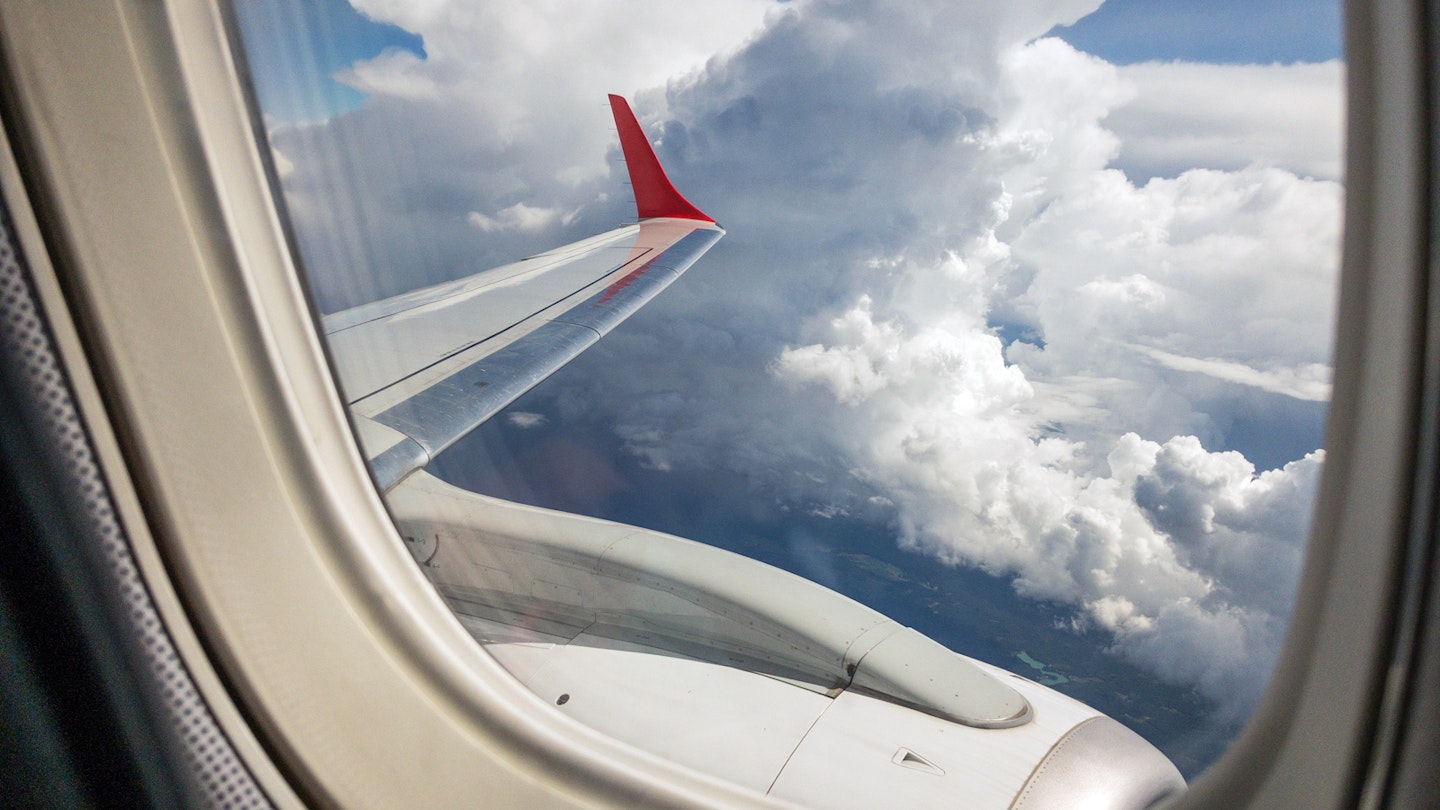Watching a flight attendant sent flying by turbulence, as seen in last year’s viral video onboard a flight from Pristina in Kosovo to Basel-Mulhouse on the Swiss-French border, is frightening. We often imagine ourselves in the same situation, perhaps recalling moments when we forgot to re-fasten our seatbelt upon returning to our seat.
Rest assured: aircraft are designed to withstand substantial turbulence, and pilots along with flight attendants are trained to guide you through it safely.
What Causes Air Turbulence?
Why does turbulence, particularly clear-air turbulence, the type that makes your flight bumpy, occur?
Let’s start with wake turbulence. Air behaves like a fluid, akin to the waves created by a boat’s hull. Aircraft generate similar wake patterns, although these are invisible to our eyes. For this reason, planes are separated by both distance and altitude from one another. Generally, larger aircraft require more distance behind them for the wake to dissipate.

Since air traffic controllers are aware of aircraft positions, wake turbulence is quite rare. More common, however, is “regular” clear-air turbulence, which becomes noticeable when eddies form as air flows over the surface of the earth.
Several factors can create eddies in the air, including large obstructions such as mountains, storms, or regions where two differing air masses collide, particularly when those air masses have varying temperatures. As a general guideline, turbulence is usually predictable when connected to other weather events, such as storms, which pilots often navigate around to ensure a smoother ride.
What Should You Do During a Turbulent Flight?
Planes are engineered to endure turbulence, as evidenced by wingtip movements during a bumpy ride. Consequently, the first advice is: do not panic.
The crew is trained to maximize your safety, meaning the main concern arises if you—or other passengers—are thrown around the cabin. This is why airlines suggest keeping your seatbelt fastened whenever seated, why flight attendants may return to their jumpseats during predicted turbulence, and why hot drinks may not be served.
Always ensure that you and your companions are securely strapped in, and avoid leaving items around your seat that could potentially become projectiles and cause injury.
Why Air Turbulence Is Expected to Increase
With climate change making weather extremes more frequent, scientific predictions indicate an increase in turbulence occurrences. Therefore, the likelihood of encountering turbulence during flights is expected to rise over the coming decades. However, there’s no need for immediate concern: these projections are oriented towards 2050 and beyond. Furthermore, instances of severe turbulence remain uncommon, which is why such events capture media attention. Last year, an average of over a hundred thousand flights occurred daily, with the vast majority proceeding uneventfully.
What Planes and Pilots Are Doing to Mitigate Turbulence
Additionally, forecasting has been enhancing. Thanks to advanced systems that provide more accurate location data for aircraft, turbulence reporting by pilots has improved significantly. As a result, nearby flights can react properly—either avoiding turbulence or securing service carts and having flight attendants take their seats.

Looking ahead, we are likely to see automated sensors on planes that send data into extensive algorithms, improving our understanding of turbulence locations. With this information, accurate predictions regarding potential turbulence occurrences can be made.
Moreover, engineers at aircraft manufacturing companies are investigating methods to reduce the effects of turbulence during flights. One promising approach is biomimicry, inspired by nature—specifically the flapping wingtips of birds like albatrosses. While this concept may appear unconventional at an airplane scale, Airbus is currently developing a scale model to explore potential advancements for future flights.





